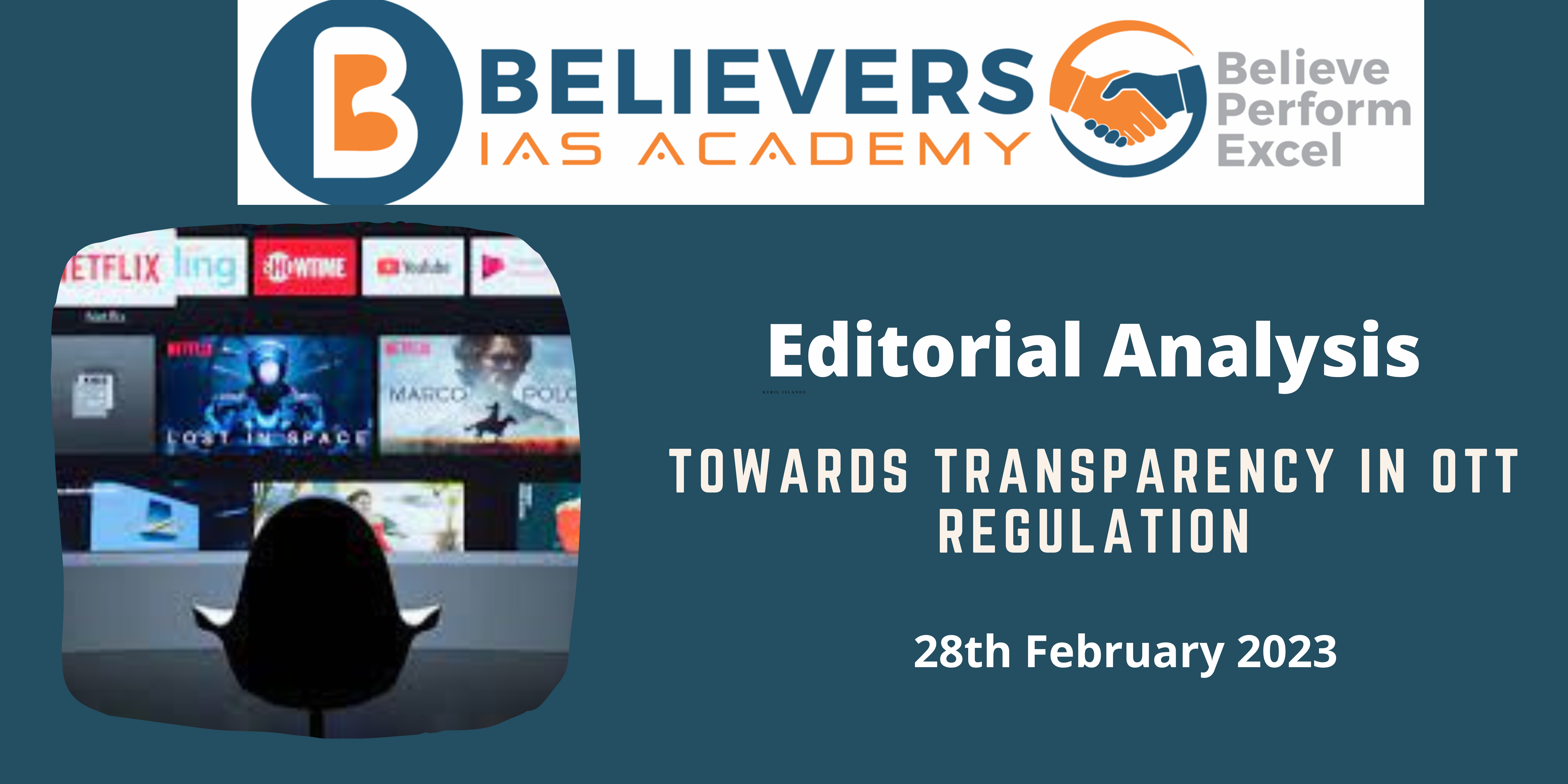TOWARDS TRANSPARENCY IN OTT REGULATION:
#GS 3 #IT and Computers #INNTERNAL SECURITY
Context:
∙When the Information Technology (Intermediary Guidelines and Digital Media Ethics Code) Regulations, also known as the new IT Rules 2021, were published by the government two years ago, the Ministry of Information and Broadcasting (MoI&B) was given the authority to control content on OTT and online platforms.
This is the OTT rule:
∙With industry-level “self-regulation” and a ministry-level “oversight mechanism” for the results, India’s strategy can be described as a light-touch “co-regulation” paradigm. The Guidelines also
contain an ethics code and a complaints procedure. Access control measures, such as parental locks,
are required for content rated U/A 13+ or above and for programmes categorised “A” (18+), respectively.
∙Over-the-top platforms, or OTTs, are companies that first use them as distribution channels for content
before producing and releasing their own web series, movies, documentaries, and short films.
∙Consider the services Netflix, Disney+, Hulu, and Amazon Prime Video.
∙Aiming for media literacy:
∙Although the OTT Rules were announced in 2021, not many people are aware of them. The Regulations state that OTT websites and interfaces must make contact information for grievance
officers and procedures for handling complaints available.
∙Yet, there are incredibly poor compliance rates. The complaint redressal information is frequently either not presented or published in a way that makes it difficult for a user to recognise it right away. The OTT app Interface occasionally lacks the information.
∙This demonstrates how crucial it is for OTT publishers to continuously offer key information regarding their duties, deadlines for complaint resolution, contacts for grievance offices, etc. The
Rules may regulate the form, content, vocabulary, and frequency with which vital information is displayed. The OTT industry associations may need to conduct regular print and online marketing to promote the complaints procedure.
∙It is possible to read age classifications (such UA 13+) and content descriptors (like “violence”) in the languages that the video was made in (apart from English). The law includes such clauses for the incorporation of anti-tobacco messages in motion pictures.
∙The Guidelines may also specify exact rules for how to make a movie’s classification or rating standout and be easy to comprehend in print and electronic media promotions and marketing for OTT content.
∙Clarity is required:
∙An impartial body may periodically assess the actual availability and effectiveness of access controls,age verification mechanisms, and the disclosure of complaint information by each OTT platform.
∙Publishers and self-regulatory organisations are required by the Regulations to disclose particular
complaint information, however the reporting formats simply keep track of the total number of complaints that were received and resolved. Alternatively, OTT providers and self-regulatory
organisations may choose to make public the full text of any complaints they receive, as well as any decisions made in response.
∙The Ministry should think about creating a specific website that serves as a central location for all pertinent rules, content guidelines, advisories, and contact information for appeals and grievances, among other things. OTT providers and appellate/self-regulatory organisations can upload the specifics of complaints and redressal decisions so that the general public and government officials can
examine them. Transparency will rise thanks to this strategy.
∙The Inter-Departmental Committee (IDC), which is made of officials nominated by several Central government ministries and subject matter experts, is the third and final tier, according to the presentregulations. Because of the way the system is set up, the Secretary of the Ministry has the final say, even when IDC recommends a course of action for OTT content infractions.
∙The need for a formal organisation to be established to regulate broadcast material has been emphasised by the Supreme Court and High Courts. Until such a legislative regulator for the media is established, the IDC’s membership may be expanded, made more representative, and given tenure
security.
∙No chance exists for an explanation, caution, or reprimand to be made public or placed on the platform or website. The Rules might take this into account. Bad actors could also be subject to financial fines. It is past time to establish a set of standards for content, categorization, age ratings, infractions, etc. in the current era of media convergence so that the content on all platforms is managed equally.
∙Conclusion:
∙Self-regulation and government support are intended to be successfully combined by India’s OTT regulatory framework. This fits with the general tendency. The I&B Ministry stated that they expected India’s OTT legislation to “boost India’s stature at a worldwide level.”




